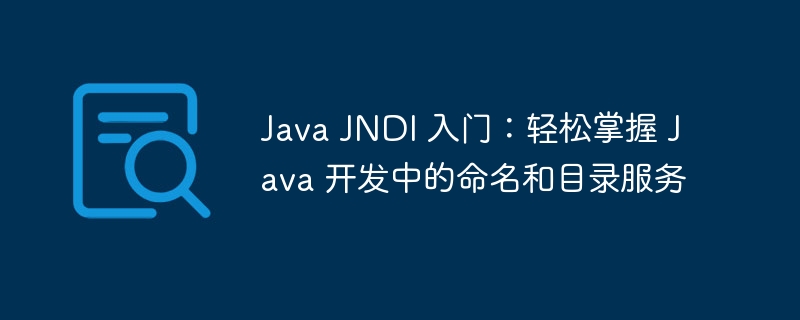

Java Getting started with JNDI is one of the essential skills for Java developers. Mastering JNDI can easily handle naming and directory services in Java applications. This article is carefully written by PHP editor Apple. It will introduce you to the basic concepts, usage and practical application scenarios of JNDI in detail, helping you to quickly get started and improve your Java development skills. Whether you are a beginner or an experienced developer, this article will provide you with practical and comprehensive guidance, allowing you to easily master JNDI technology in Java.
Using JNDI can bring the following advantages:
Basic concepts in JNDI include:
JNDI can be used for many different purposes, including:
The following is a demonstration code of how to use JNDI to find a DNS service:
// 导入 JNDI API
import javax.naming.Context;
import javax.naming.InitialContext;
// 创建初始上下文
Context ctx = new InitialContext();
// 查找 DNS 服务
Object dnsService = ctx.lookup("java:comp/env/dns");
// 打印 DNS 服务信息
System.out.println("DNS 服务:");
System.out.println("" + dnsService);In the above code, the JNDI API is first imported. Then, an initial context is created. Next, use the initial context to find the DNS service. Finally, the DNS service information is printed.
JNDI is a set of APIs in the Java platform for accessing naming and directory services. It provides a unified set of programming interfaces that enable Java programs to transparently access different naming and directory services. JNDI can be used for many different purposes, including finding services, accessing directories, registering services, and managing objects.
The above is the detailed content of Getting Started with Java JNDI: Easily Master Naming and Directory Services in Java Development. For more information, please follow other related articles on the PHP Chinese website!
 The difference between rest api and api
The difference between rest api and api
 How to set startup items at startup
How to set startup items at startup
 How to use the print function in python
How to use the print function in python
 How to use the notnull annotation
How to use the notnull annotation
 Dogecoin price today
Dogecoin price today
 What are the differences between hibernate and mybatis
What are the differences between hibernate and mybatis
 The difference between large function and max function
The difference between large function and max function
 Where to buy Bitcoin
Where to buy Bitcoin




